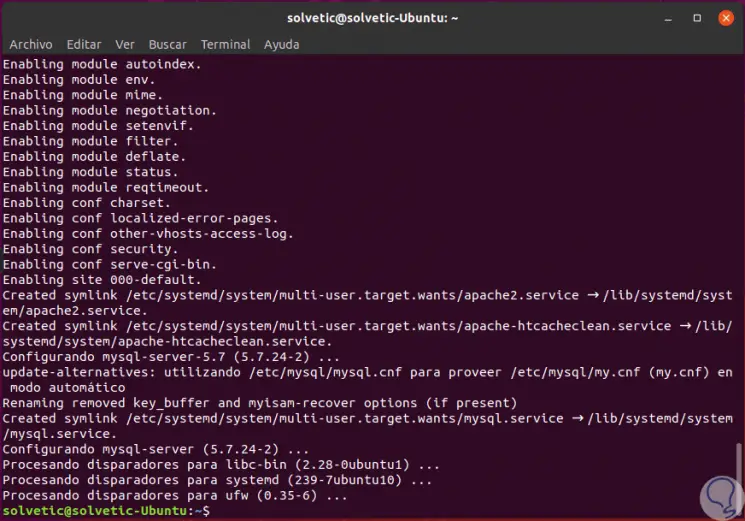

- #PHPMYADMIN UBUNTU INSTALL HOW TO#
- #PHPMYADMIN UBUNTU INSTALL INSTALL#
- #PHPMYADMIN UBUNTU INSTALL UPGRADE#
- #PHPMYADMIN UBUNTU INSTALL PASSWORD#
Please check the status by tying the following on the browser. You can see that Apache is now allowed to pass traffic. I am getting the status that it is inactive, if in case you get this error please enable the ufw like this $ ufw enableĬheck the status again, this time round it will show the following on your terminal $ Status: active

Now we can check the status to verify that indeed Apache had been allowed $ sudo ufw status Do the following in order to allow traffic from Apache. Let us check the status of our firewall with the following command $ sudo ufw app listĪllow only Apache traffic on port 80. When installation is complete then we can move to adjust our firewall settings to allow HTTP traffic accordingly. We are installing Apache because PHPMyAdmin requires it to run its operations.
#PHPMYADMIN UBUNTU INSTALL INSTALL#
Use the following to install Apache and update our firewall rules to allow Http traffic pass. It is installed together to help servers host dynamic websites written in PHP. LAMP stand for Linux, Apache, MySQL and PHP. Install Linux, Apache, MySQL and PHP (LAMP)
#PHPMYADMIN UBUNTU INSTALL UPGRADE#
When both update and upgrade is complete, we can move to install LAMP stack on our system. Let us update ours and move on to the next step. The first thing you must always do to any Linux operating system is to update its repositories to reflect on daily changes done to the system.

#PHPMYADMIN UBUNTU INSTALL HOW TO#
How to setup Ubuntu 20.04 Server for the first time Prerequisites How to Install Apache, MYSQL, PHP on Ubuntu 20.04

Still you can perform database tasks such as creating users, running transactions, creating databases etc. PHPMyAdmin assist users who are not well conversant with the command line because PHPMyAdmin is user friendly because of its user interface presence. PHPMyAdmin is free and open source administration tool for MySQL and Mariadb database server. If you have any question feel free to leave a comment below.In this tutorial guide we will be learning how to install and configure PHPMyAdmin on Ubuntu 21.10 9 (Impish indri).
#PHPMYADMIN UBUNTU INSTALL PASSWORD#
To access the phpMyAdmin interface open web browser and type your server’s public IP address or domain name followed by /phpmyadmin: Enter the administrative account username and password which you created on previous step and hit on Go button.Īfter successful log in, you’ll see the phpMyAdmin user interface, which will look something like this: Conclusion #įinally, you have successfully installed phpMyAdmin with Nginx on Ubuntu 18.04 system. * TO WITH GRANT OPTION Accessing phpMyAdmin # Next, create a new administrative user with strong password and grant appropriate permissions by typing: mysql> CREATE USER IDENTIFIED BY 'STRONG-PASSWORD' You can login by below command: sudo mysql Now, we will use that user to login to phpMyAdmin and do further administrative tasks on our MySQL or MariaDB server. This user will have the same privileges as the root user and will be set to use the mysql_native_password authentication method. Since phpMyAdmin requires users to authenticate with a password, so instead of changing authentication method we will create a new administrative MySQL account in order to access the interface. It will not be good to change authentication method for the MySQL root user. In order to log in to phpMyAdmin as your root MySQL user, you will need to switch its authentication method from auth_socket to mysql_native_password. This will increase some greater security and usability in many cases, but it can also complicate when you need to allow an external program like phpMyAdmin. It means that you can’t authenticate as a root by providing a password. In Ubuntu systems, the root MySQL user is using the auth_socket plugin by default to authenticate. Sudo ln -s /usr/share/phpmyadmin /var/www/html Creating MySQL User and Set Privileges #


 0 kommentar(er)
0 kommentar(er)
